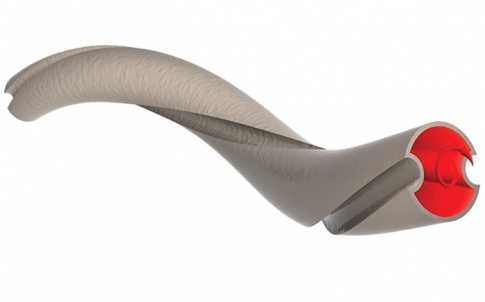C2I 2017: Nuclear industry innovation inspires life-saving heart implant
The Spiral-Inducing Bypass Graft was produced by an unusual multi-disciplinary, cross-border venture. The laws that govern blood flow apply also to the dynamics of coolant in nuclear reactors, which prompted the development of this unique biomedical device
Collaborate To Innovate 2017
Category: Health and wellbeing
Winner: Spiral-Inducing Bypass Graft
Partners: University of Manchester; University of Michigan; Manchester Metropolitan University; National University of Singapore; Cardiovascular Research Institute at Sant Pau Hospital, Barcelona
Nuclear physics and cardiology may not seem like natural bedfellows but the winner in the Health & Wellbeing category has cleverly combined the two. The Spiral-Inducing Bypass Graft is an artificial implant for the heart that induces a helical flow of blood, which improves the success of cardiovascular surgery and ultimately saves lives. It’s the result of a multi-faceted, international collaboration that spans the globe, led by Dr Amir Keshmiri.

Almost 35,000 coronary artery bypass graft (CABG) procedures take place in the UK each year. However, according to the British Heart Foundation, more than half of CABGs fail within 10 years. Haemodynamic factors are widely acknowledged as playing a key role in the thickening of blood vessels that can cause graft failure. Finding a way to manipulate blood flow would have the potential to dramatically improve the procedure’s success rate.
Register now to continue reading
Thanks for visiting The Engineer. You’ve now reached your monthly limit of premium content. Register for free to unlock unlimited access to all of our premium content, as well as the latest technology news, industry opinion and special reports.
Benefits of registering
-
In-depth insights and coverage of key emerging trends
-
Unrestricted access to special reports throughout the year
-
Daily technology news delivered straight to your inbox










National Gas receives funding to develop Gravitricity underground hydrogen storage system
One single rock salt mine - Winsford - has 23 <i>MILLION </i>cubic metres of void and even allowing for 10% of that void set aside for hazardous waste...